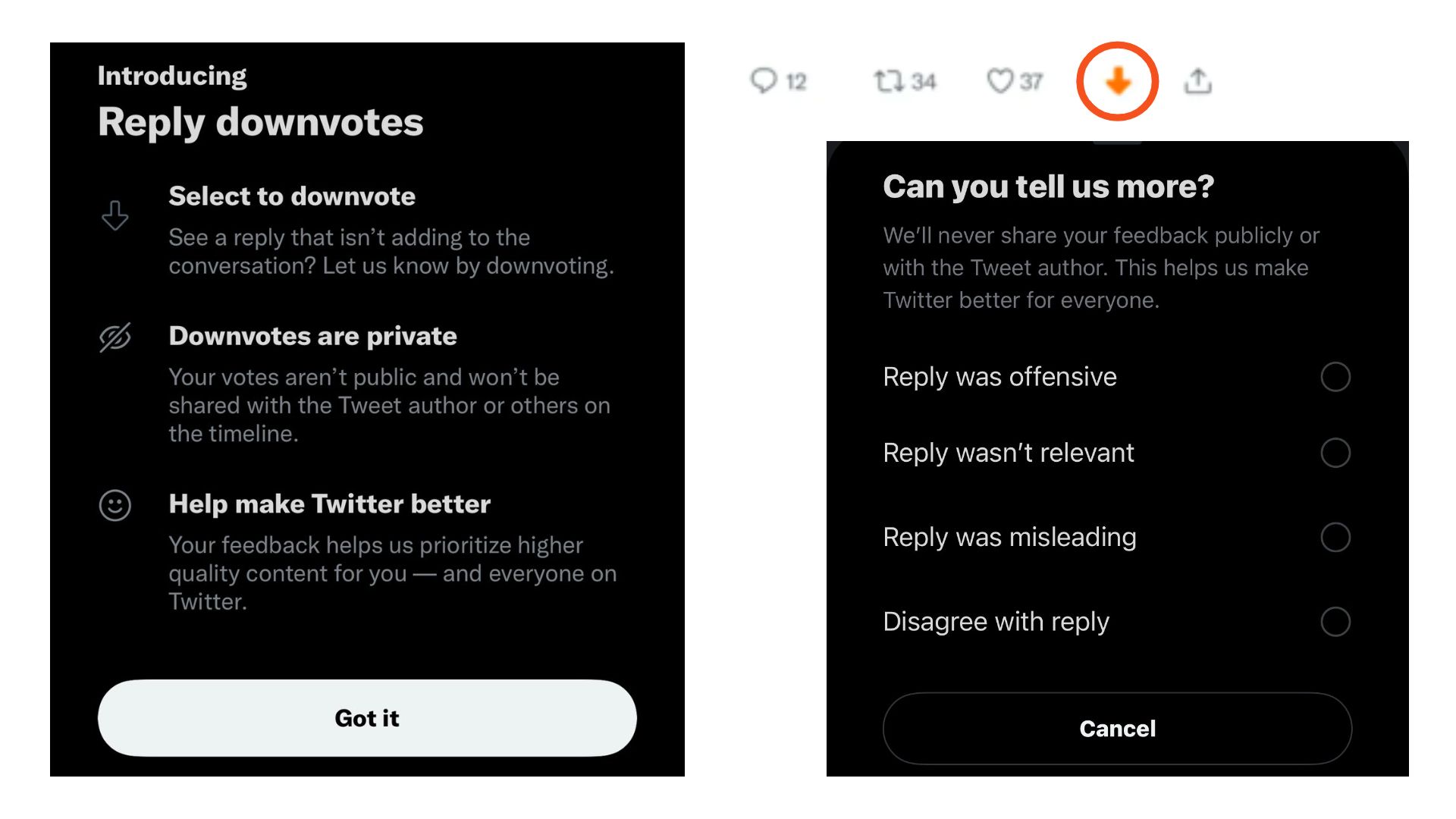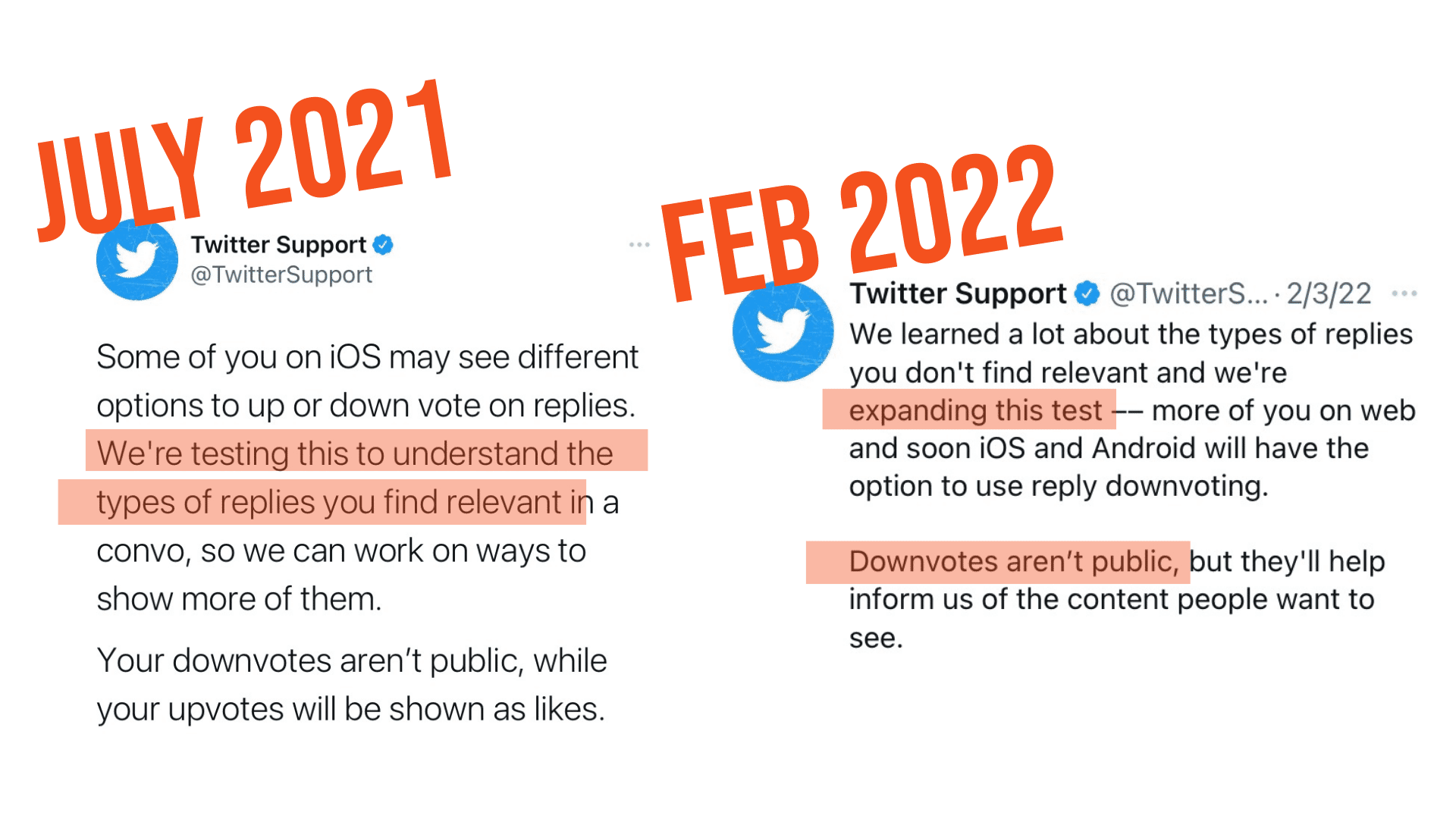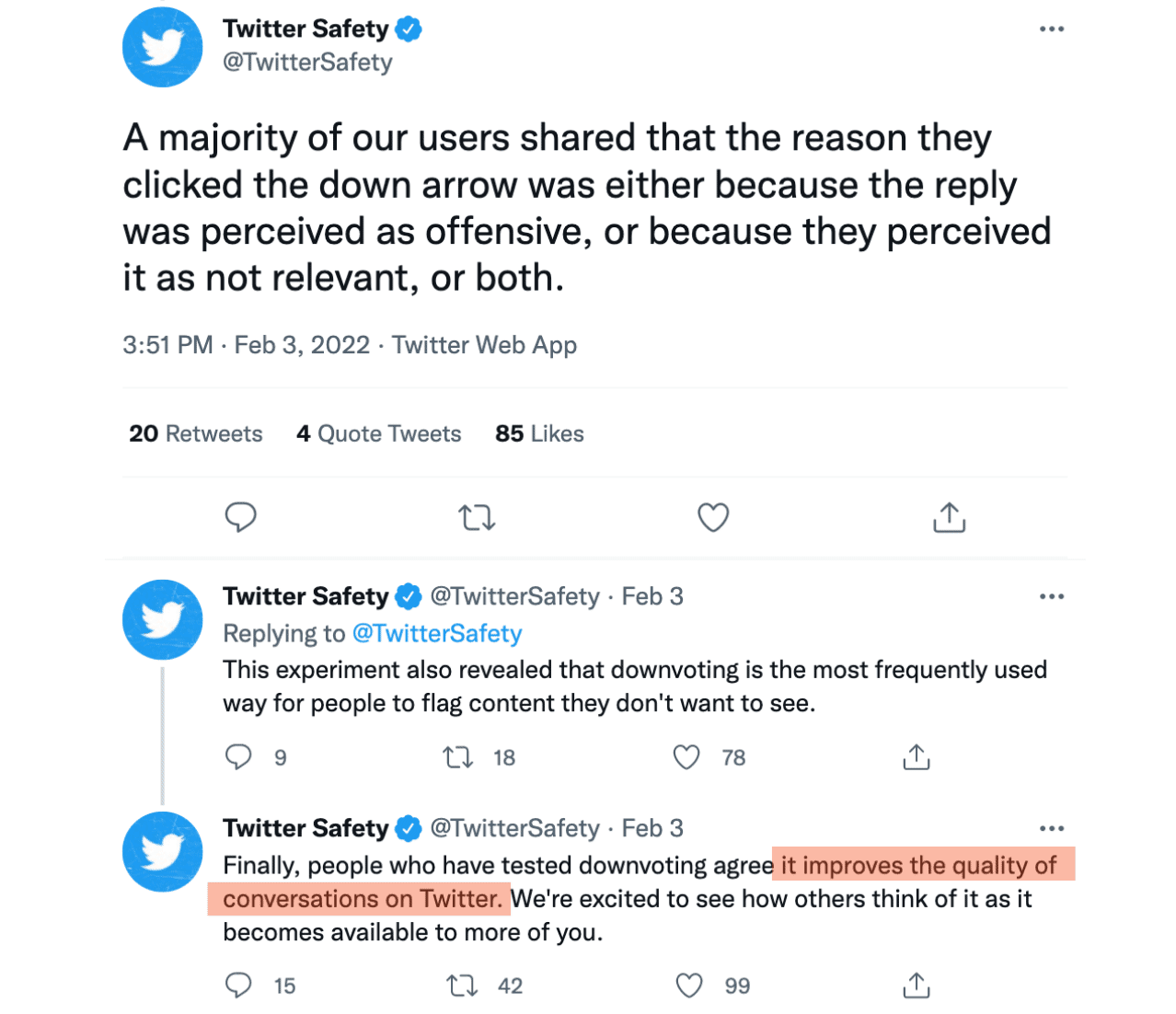How to Downvote on Twitter (and Why You Should)
Twitter now has a downvote feature to help clean up your Twitter feed. In this article, I'll share how to know if you can downvote on Twitter, how to downvote if the feature's available to you, and what happens after you downvote.

Have you downvoted a tweet yet?
Check your Twitter, because you might have a new button: a down arrow to the right of the “like” heart. This is the downvote.
It’s possible your account had this button for a few weeks this spring, or even for a time last year. Whether you’ve used it, lost it, saw it for the first time ninety seconds ago, or don’t know what I’m talking about because it’s yet to hit your feed—let’s talk about this effort to improve the Twitter experience.
I'll tell you how to use the downvote button, what effect it has on your account, and what people are saying about it.

How Do I Get the Downvote Button on Twitter?
There's no installation or particular action to take to get the downvote button. It's being tested on a subset of users, and you're either in that subset or you're not. Many accounts—globally, on web and mobile versions, iOS and Android—will see it appear this week.
If you have this feature, you'll see a down arrow under the text of a tweet reply (not a freestanding tweet), to the right of the "like" button. To use it, all you have to do is click the arrow. Just like the other main Twitter buttons, the downvote can be clicked again to undo the action.
What Happens When I Downvote a Tweet?
It's important to note that the downvote is not the angry version of the like button.
It doesn’t exist to publicly quantify negative reactions to a tweet—or publicly do anything, actually. Clicking it doesn't notify a tweet's author or other users. It doesn't reorder tweets or decrease the number of likes.
The point of the button, according to Twitter, is to help the platform "prioritize higher quality content." The company suggests downvoting replies that aren't "adding to the conversation."

What does the downvote do?
- Records input privately: The author of the tweet you've downvoted will never know, and Twitter users won't see a downvote count (like on Reddit) or dogpile-style public shaming.
- Exists on replies only: This is a tool to analyze conversations more than independent tweets.
- Provides Twitter with data: Think of the button as a way to talk to Twitter and its algorithm, not your friends and other Twitter users.
What Is the Point of a Downvote on Twitter?
Twitter created the downvote because your content specifically is bad, and the company wanted proof.
I kid.
They’re studying spammy replies, looking to “better surface the most relevant content” and “increase healthy participation and engagement,” as Twitter rep Celeste Carswell told the Washington Post.
They've been testing this for a while. In mid-2021 the social media platform debuted its down arrow for a small set of iOS users in a few countries. It was described as a (potentially) limited-time, data-gathering feature. Sort of like a school principal popping into the cafeteria to pull kids aside and ask how they're doing.
Twitter wanted to know what kind of replies people don’t like to see. What exactly they plan to do with this information is TBD.

In February 2022, Twitter expanded the downvote experiment, pushing the feature out worldwide to select users of Twitter on the web. The feature continues to expand, now reaching a subset of web, iOS, and Android users globally.
The company has shared some early findings:
- Most people use the button to mark replies they find offensive and/or irrelevant.
- When it's an option, downvoting is the main way users indicate they don’t want to see a particular tweet (as opposed to options like muting or marking as spam).
- Overall, claims Twitter, downvoting “improves the quality of conversations” on the platform.

What's Wrong With Twitter's Downvote Button?
Some Twitter users are skeptical of the downvote, questioning both the button’s placement and the potential threat in its existence.
The Twitter downvote button is placed more or less at the same position where the like button used to be placed earlier, and my thumb has still not got used to the same.
— Mukul Sharma (@stufflistings) June 17, 2022
Have you been facing the same problem lately?
I have not used the downvote button yet because I don’t want to encourage something that could easily be used to mass downvote marginalized Twitter users
— Miri's Maxim🏳️⚧️ (@MaximumMiri) July 26, 2021
Interested to see the effects of this new downvote feature on Twitter. Suspect it will add to the echo chamber and suppress dissenting views.
— Beyond the Arc (@beyondthearc) March 18, 2022
Thoughts? pic.twitter.com/ZrRMOe6u6X
Why You Should Downvote Tweets
Social media platforms are constantly adapting to survive. They launch new features to stand out—as with Twitter Spaces or Super Follows—or to chase a successful competitor, like TikTok-inspired Instagram Reels or Reddit's vertical video feed.
Twitter will go on changing, and you might as well give the algorithm your two cents so it changes in a way that's useful to you. Bots and spam are complex challenges, and at least right now while downvotes aren't burying minority-opinion tweets or encouraging public pile-ons, it might be productive if Twitter knows what you think is garbage.
For more info on what's happening on Twitter and tips like how to download videos from the platform, check out Kapwing’s Twitter resource library.
Related Articles:









